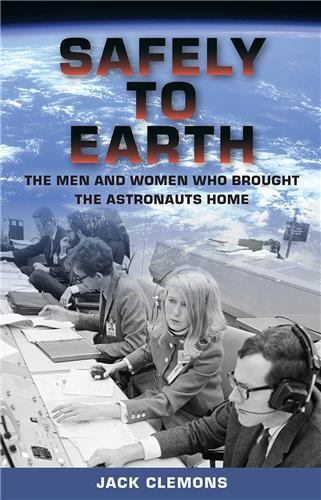Showcasing over 450 unpublished and lesser-known images, this first photographic history of the Space Shuttle program traces the growth of the program from 1965 to 1982, from initial concept through its first four space flights.
Browse by Subject: Science and Technology
Please note that while you may order forthcoming books at any time, they will not be available for shipment until shortly before publication date
The first volume to focus on suburbs and sustainability in the United States, this collection approaches the topic through regionally diverse case studies, showing that activism and leadership are currently advancing a strong sustainability agenda in regions many would have believed unlikely.
A fascinating behind-the-scenes history of a vital component of the space program, this book goes inside the suit that made it possible for human beings to set foot on the Moon. Bill Ayrey, longtime space suit test engineer at ILC Dover, draws on original files and photographs to tell the dramatic story of the company’s role in the Apollo Program.
This book is a behind-the-scenes look at the bizarre crime of astronaut Lisa Nowak, who drove 900 miles to intercept and confront her romantic rival in an airport parking lot—allegedly using diapers on the trip so she wouldn’t have to stop. This is a riveting journey inside the high-pressure world of one of America’s most elite agencies and the life of one beleaguered astronaut.
In the upcoming decades, an unprecedented demographic shift will take place; the eighty-five and over population is projected to climb far higher than any other age group. To keep the current elderly population healthy and help prevent future generations from experiencing poor health outcomes, researchers are studying crucial connections between skeletal muscles and whole-body health.
Examining the ways in which NASA’s goal of space exploration both conflicted and aligned with the cause of racial equality, this volume provides new insights into the complex relationship between the space program and the civil rights movement in the Jim Crow South and abroad.
While medical schools usually emphasize the teaching of advanced scientific fundamentals through a carefully planned, formal curriculum, few focus on the equally crucial “hidden curriculum” of professional attitudes, skills, and behaviors. This concise and practical guide helps teachers effectively prepare students for seldom-taught issues that arise daily in the practice of clinical medicine.
Through a wealth of unpublished and recently discovered images, this book presents new and rarely seen views of the people, places, and events involved in planning, accomplishing, and commemorating the first Moon landing.
In this one-of-a-kind memoir, Jack Clemons—a former lead engineer in support of NASA—takes readers behind the scenes and into the inner workings of the Apollo and Space Shuttle programs during their most exciting years. Discover the people, the events, and the risks involved in one of the most important parts of space missions: bringing the astronauts back home to Earth.
Science writer Willy Ley inspired Americans of all ages to imagine a future of interplanetary travel long before space shuttles existed. This is the first biography of an important public figure who predicted and boosted the rise of the Space Age, yet has been overlooked in the history of science.











